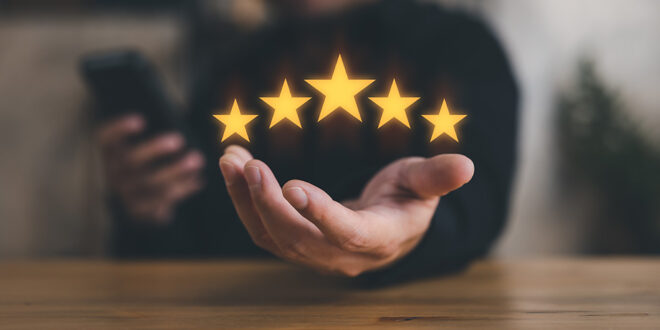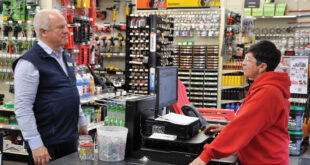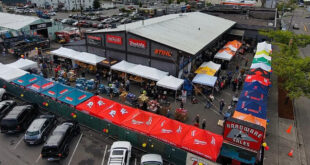Once reserved for frequent fliers and elite customers, loyalty programs have evolved and can be found in all industries, offered by companies and businesses of all sizes. Despite their popularity with retailers, most loyalty programs aren’t creating loyal customers. On average, customers belong to 17 loyalty programs, but only 50% of customers are actively engaged in any program, according to the McKinsey & Company Loyalty Survey.
“Clearly, there’s more to building customer loyalty than setting up a program,” says Ana Wight, general manager of retail at Lightspeed Commerce, a commerce platform that empowers merchants around the world to simplify, scale and provide exceptional customer experiences. “In order to drive engagement and repeat purchases, your rewards program should truly provide a rewarding experience. To do that, it needs to be well integrated into your point of sale system, powered by an automated marketing program and designed to keep in contact with customers however they prefer.”
Wight shares her insights with Hardware Retailing into the ways retailers can harness technology to build and manage a better customer loyalty program.
Hardware Retailing (HR): What are some steps retailers can take when setting up their loyalty program to ensure customers actually take advantage of the program?
Ana Wight (AW): It starts with finding a loyalty program vendor whose platform prioritizes utility across channels. Instead of hiring a developer to code a rewards program from scratch, you’ll be much better off working with existing tools that have been designed to make your employees’ lives easier. Look for a loyalty program solution that integrates with your point of sale (POS) and customer relationship management (CRM) for ease of use.
Given how often customers touch both online and offline channels when shopping, whatever loyalty program you launch should work across channels as well. Pick a vendor with a solution that can seamlessly sync to every store, including online ones.
Finally, as a bonus, make sure the vendor you pick includes marketing tools in their loyalty tech suite. Loyal customers are valuable customers who are more likely to be open to your marketing efforts, so the loyalty platform should have a way to make the most of that.
To create a successful program, you’ll need a robust platform that helps you reward and market to your customers. Don’t settle—you need that platform to grow with your base of loyal customers as their preferences and behavior evolves throughout the years.
HR: What makes a loyalty program easy to engage with and one customers will want to follow?
AW: First, decide how customers will garner points and earn rewards. Will you give them points for every purchase or every purchase of a certain amount (e.g., minimum $20 spend)? Will you have a point system (e.g., $1 spent equals 5 points) or just offer rewards after customers have spent a certain amount (e.g., reward after every $100 spent)?
Then, at every checkout, remind customers to enter their phone number, login, scan the app, show their membership card or do whatever else is needed to get points.
It’s also helpful to make your rewards exciting and varied. Some of the most popular rewards are:
- Discounts: For example, you could offer 50% off one item, or $10 off the next purchase.
- Gift cards: Provide digital or physical gift cards that customers can use online or in-store in exchange for points.
- Products: Take inspiration from the classic coffee shop punch card model, which usually gives customers a free cup of coffee after they’ve purchased a certain number.
- Collectible items: Give away branded merchandise or products that are available exclusively to loyalty members.
HR: What are some other ways to boost engagement with a loyalty program?
AW: Generating sales is great, but don’t forget that certain nonpurchase behaviors are valuable too. Having the right technology behind your loyalty program unlocks the ability to incentivize actions like referrals, social media engagement and providing feedback, which deepen customer relationships and drive word-of-mouth marketing.
Other behaviors you can reward include: Creating an account, referring a friend, sharing on Facebook, writing a review and following you on social media.
HR: Why is it important to track data from a loyalty program?
AW: As customers sign up for your loyalty program, they give you their contact information and permission to contact them. Make sure you’re using that privilege effectively. Stay top of mind by sending marketing messages via email and SMS to alert them of new products, sales and other promotions.
Not every loyalty program member has the same habits or shopping preferences, so use the data from your loyalty program and point of sale to sort them into segments. Do you have customers who are primarily active around the holidays? Segment them and send them extra incentives to come back in January.
Watch your brand activation triggers as well. If the data shows that customers who make three purchases online are likely to keep making them, create an irresistible loyalty reward after that second purchase to get them to come back.
Of course, it’s not feasible for your marketing teams to set these kinds of reminders up manually every single time. That’s where a robust loyalty tool comes in handy—it can automate most of the management for you.
HR: How can retailers optimize data that comes from their loyalty program?
AW: Tracking and analyzing your loyalty program data is essential for optimizing it. Data points like customer behavior, purchase patterns and preferences unveil valuable insights that enable you to tailor rewards, offers and communication. Your teams need to know when they should adjust rewards, what email and SMS send cadence resonates with your customers, if customers are coming back more or less often after engaging with your program and more.
The following measures will help you determine the performance of your loyalty rewards program:
- Average purchase cycle: This is a measure of how much time elapses between your customers’ successive purchases.
- Repeat purchase rate: Proportion of customers who make multiple purchases, reflecting loyalty and retention.
- Customer lifetime value: Total revenue generated by a customer over their entire relationship with your brand.
- Points or reward redemption rate: Percentage of earned points or rewards that customers actually redeem.
- Number of customers per tier: If you have multiple tiers, this metric lets you see how members are distributed across different loyalty levels.
- Customer feedback: Input and opinions customers provide to evaluate their satisfaction and preferences.
- Average purchase frequency rate: Average number of purchases made by customers within a specific timeframe.
- Loyalty program ROI: Ratio of net profit generated by your loyalty program vs. total cost of running it.
 Hardware Retailing The Industry's Source for Insights and Information
Hardware Retailing The Industry's Source for Insights and Information







